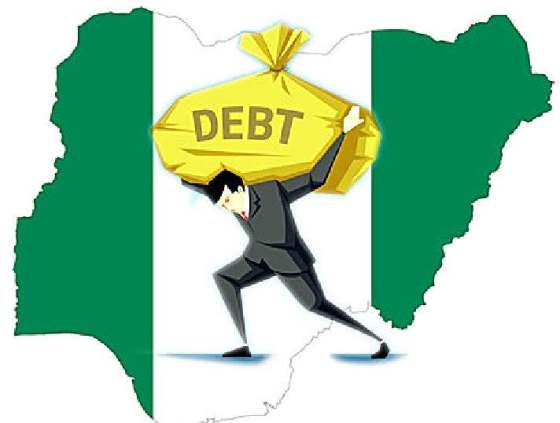
Managing Nigeria’s Debt Burden: An Agenda for Incoming Administration, by Zeenat Sambo
Over the past few decades, Nigeria has experienced significant economic growth and development, but it has also experienced a growing debt burden, which has been a major concern for policymakers and analysts.
In the case of shortfall in government revenues, governments all over the world borrow. Public debt, therefore, plays an important role in financing public expenditures, especially when taxes cannot be raised and spending cannot be reduced.
Nigeria’s debt was estimated to be approximately $10.32 billion in 2015. This was a relatively low level of debt in comparison to other African countries at the time. However, over the next few years, Nigeria’s debt began to increase rapidly.
By the end of 2016, Nigeria’s debt had risen to $57.39 billion, an increase of over 450% from 2015. This increase was largely due to the decline in global oil prices, which had a significant impact on Nigeria’s economy, as oil exports are a major source of revenue for the country.
In order to address this growing debt burden, the Nigerian government has implemented a number of measures aimed at reducing debt and improving fiscal sustainability. The introduction of a debt management strategy was one of the key measures to reduce Nigeria’s reliance on foreign borrowing and increase domestic debt. The government also implemented a number of fiscal reforms, including the removal of fuel subsidies and the introduction of a more efficient tax system.
Despite these efforts, Nigeria’s debt continued to rise over the next few years. By the end of 2019, Nigeria’s debt had reached $83.88 billion, an increase of more than 45% from 2016. As a result of declining revenues and high spending, the government continued to rely on borrowing to finance its budget deficit.
A further increase in debt occurred in 2020 as a result of the COVID-19 pandemic. To finance its response to the pandemic, the government increased borrowing, which included measures such as providing relief packages for individuals and businesses as well as expanding the health care system.
As of 2022, Nigeria’s debt stands at around $89.6 billion, according to the Debt Management Office (DMO). Although it was a significant amount of debt, the government made significant strides to reduce its reliance on borrowing and improve its fiscal sustainability. For example, the government has introduced a number of measures aimed at increasing revenue. These measures include the introduction of a new tax system and the expansion of the non-oil sector.
As at June, 2022 the Total Public Debts, representing the Domestic and External Debts of the Federal Government of Nigeria (FGN), the thirty-six (36) State Governments and the Federal Capital Territory (FCT), was N42.84 trillion. The comparative figures for March 30, 2022 were N41.60 trillion.
It is worth noting that the total external debt as of March 31, 2022 was N16.61 trillion, which is approximately the same as the figure for March 31, 2022. Over fifty-eight percent (58%) of the External Debts are concessional and semi-concessional loans from multilateral lenders such as the World Bank, International Monetary Fund, Afrexim Bank and African Development Bank and bilateral lenders including Germany, China, Japan, India and France.
Total Domestic Debts was N26.23 trillion due to New Borrowings by the FGN to part-finance the deficit in the 2022 Appropriation (Repeal and Enactment) Act, as well as New Borrowings by State Governments and the FCT.
Also, DMO debt analysis released in 2023 revealed that Nigeria’s debt profile as of December 31, 2022 is N46.25 trillion or $103.1bn. The financial giant in a statement showed that the country owned over N7tr more in 2021.
The statement read, “Total Public Debt Stock consisting of the Domestic and External Debt Stocks of the Federal Government of Nigeria (FGN) and the sub- national governments (the 36 State Governments and the Federal Capital Territory) was N46.25 trillion or $103.1bn. The comparative figure for December 31, 2021, is N39.5tr or $95.77bn. In terms of composition, Total Domestic Debt Stock was N27.55tr ($61.42bn) while total external debt stock was N18.7tr ($41.6bn).”
It added that the reasons for the increase in the Total Public Debt Stock were new borrowings by the Federal Government and sub-national governments, primarily, to fund budget deficits and execute projects.
Nigeria’s national debt is a significant challenge for the country’s economy, and the incoming government must take a multifaceted approach in addressing it. Here are some ways the incoming government can effectively pay back national debt:
A first step toward paying off the national debt is increasing revenue. The Nigerian government can do so by increasing tax revenue and diversifying its economy away from oil. This can be achieved by promoting non-oil sectors such as agriculture, manufacturing, and services, as well as encouraging foreign direct investment in these sectors.
Nigeria’s debt can also be addressed by reducing government expenditure. This can be accomplished by cutting waste and corruption in public spending, reducing the number of unnecessary government agencies, and prioritising essential services, such as healthcare and education.
The incoming government may also prioritise debt repayment by allocating more funds to debt servicing in its budget, which will help to maintain the country’s credit rating by ensuring debt obligations are met on time.
It is also important for the new government to consider refinancing its debt so as to lower the cost of borrowing. This can be accomplished by negotiating with creditors to extend the maturity of the debt or by issuing new debt at a lower interest rate.
Implementation of debt management strategy should also be considered to manage the country’s debt effectively. This strategy should include a clear plan for borrowing, debt repayment, and debt sustainability.
Effectively paying back national debt requires a combination of measures. By engaging proper methods, Nigeria can reduce its debt burden and achieve long-term economic growth and sustainability.
